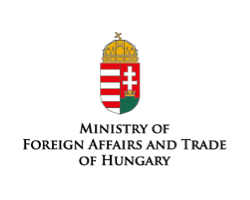
2021-05-18
Although most of our foreign students live and study in Budapest, the cities in the countryside also have many things to offer for students. We have listed some of the most significant cities below and what they are famous for.
Budapest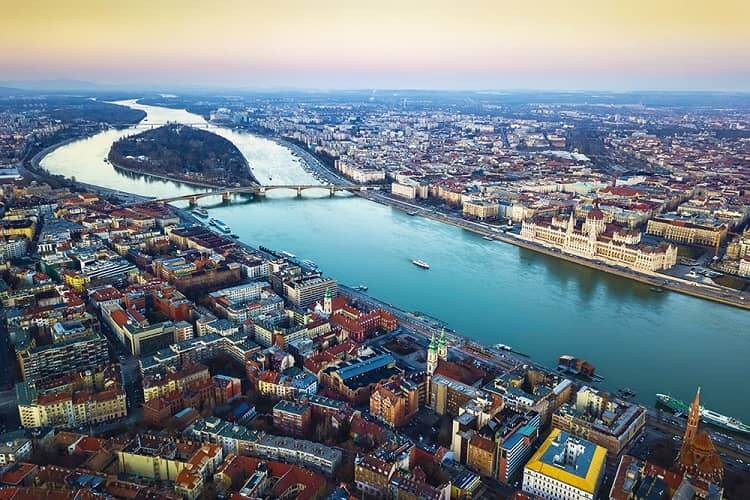 Budapest is the capital of Hungary, located in the heart of the country. With over 1 700 000 inhabitants, Budapest is the largest and most densely populated city in the country, stretching along both banks of the Danube river. With areas inhabited since the Roman ages, Budapest is living and breathing history. It isn’t just a city of numerous World Heritage Sites – it also has a vibrant cultural life with endless possibilities for indoor and outdoor activities. Budapest is also considered a science hub – with multiple prestigious universities, strong international academic life, and a never-ending source of innovation. Choose from the 34 higher education institutions that belong to this popular capital and with their communities shape the everyday life of the city.
Budapest is the capital of Hungary, located in the heart of the country. With over 1 700 000 inhabitants, Budapest is the largest and most densely populated city in the country, stretching along both banks of the Danube river. With areas inhabited since the Roman ages, Budapest is living and breathing history. It isn’t just a city of numerous World Heritage Sites – it also has a vibrant cultural life with endless possibilities for indoor and outdoor activities. Budapest is also considered a science hub – with multiple prestigious universities, strong international academic life, and a never-ending source of innovation. Choose from the 34 higher education institutions that belong to this popular capital and with their communities shape the everyday life of the city.
Debrecen
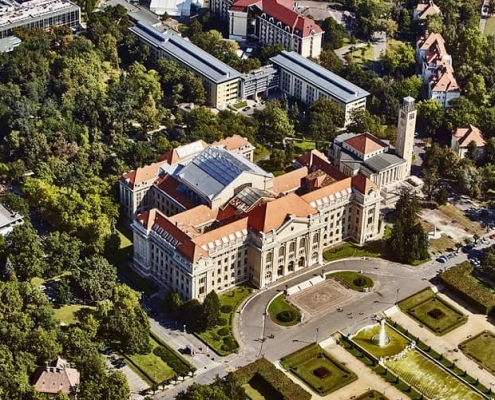
After Budapest, Debrecen is the second-largest city in Hungary. It is the regional centre of the Northern Great Plain region and the seat of Hajdú-Bihar County. This city has preserved its rich cultural life. Each year, on 20th August, a flower carnival takes place in the city, offering a variety of entertainment such as folk dance, parades and concerts. Debrecen is home to the University of Debrecen, whose main building is a widely-praised piece of architecture located in the “Great Forest” area. The university has many departments, is a major research centre in Europe and maintains a leading position in medical and information technology education.
Miskolc
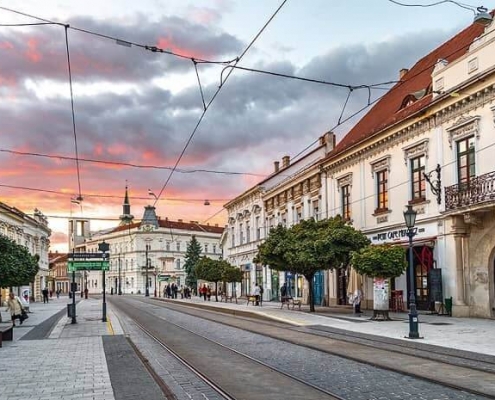
Miskolc is a city situated in north-east Hungary and is mostly known for its heavy industry. Miskolc is the fourth largest city in Hungary. It is also the seat of Borsod-Abaúj-Zemplén County and the regional centre of the Northern Hungary region. By the 19th century, it had become an important commercial and industrial centre due to its geographical location. Nowadays, it’s one of the most popular choices for students who come to study in Hungary. Miskolc is full of hidden treasures like the Benedictine Monastery Ruins or the Cave bath of Miskolctapolca, it is also famous for the Castle of Diósgyőr where a medieval bustle is organised annually and for the Bükk National Park with all its fascinating landscapes. The University of Miskolc is a relatively young institution, founded in 1949. Built in the style of the American campus model, it is surrounded by a large park and various sports facilities.
Szeged
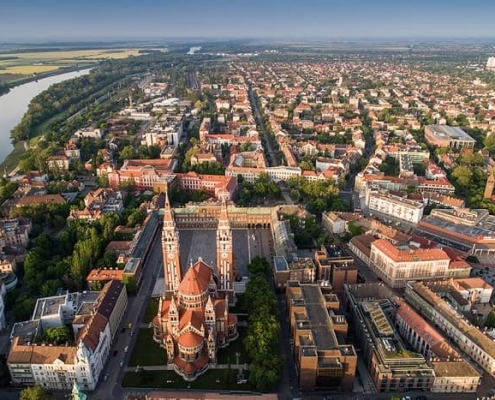
Szeged is the regional centre of South-Eastern Hungary and the seat of Csongrád County at the meeting point of Hungary’s second biggest river, the Tisza and a smaller river, Maros. The city and its area have been inhabited since ancient times and it has slowly grown into the third most populated locations of Hungary. The city’s current landscape is based on a tragedy – the big flood of 1879 demolished most of the buildings, giving place to a newer, more picturesque building period. The city’s most impressive monument is the Cathedral, located in the town centre. Every summer, the square in front of the Cathedral transforms into a huge open-air theatre to host the Szeged Open-Air Festival. The University of Szeged was founded in 1872, making it one of the oldest and most prestigious universities of the country. At present, the university consists of 12 faculties, and the 21 000 student body has a 14% international student ratio. You can study almost everything, ranging from humanities to business studies or health sciences.
Pécs
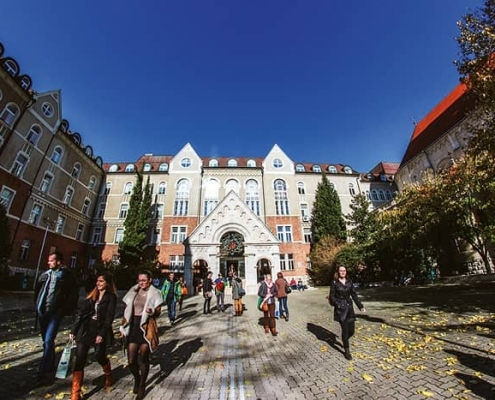
Pécs is located in the southwest of the country and serves as the administrative and economic centre of Baranya County. Pécs has a rich cultural life and hosts a wide variety of historical buildings, such as the Basilica of St. Peter constructed in the 11th century. Several Turkish buildings date back to the age of the Ottoman Empire and give the city a multicultural atmosphere. The city of Pécs was selected as one of the European Capitals of Culture for the year 2010. The University of Pécs was founded in 1367, making it the oldest university in Hungary. It now ranks among the top European universities. It has 10 faculties and offers a wide range of programmes, covering nearly every possible field of study.
Győr
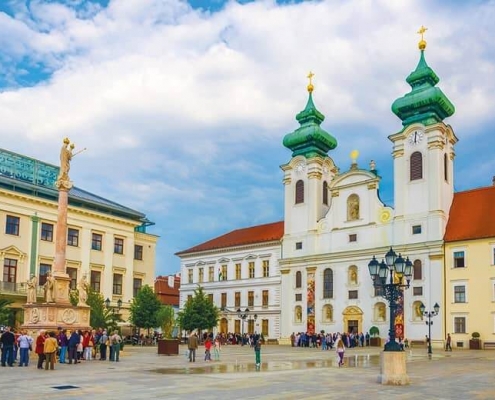
Győr is located in the north-western part of Hungary. The seat of Győr-Moson-Sopron County is located on one of the most important roads of Central Europe, halfway between Budapest and Vienna so it only takes one hour to reach the capital of Austria. The area has been inhabited since ancient times. Győr has a charming town centre and is abundant in beautiful baroque buildings. The Széchenyi István University is located in Győr and it has an excellent reputation in electrical and mechanical engineering.
Dunaújváros
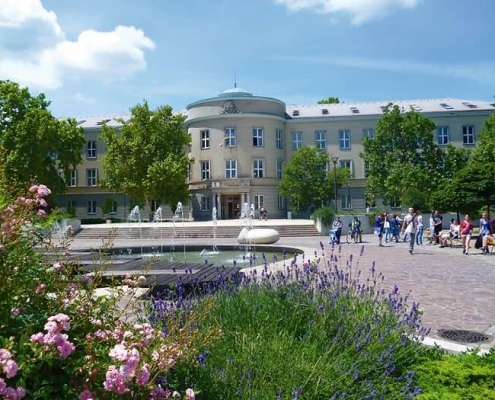
Dunaújváros is situated in the centre of Hungary, quite near – only 67 km – away from Budapest. Dunaújváros was an industrial town; during the ‘50s it became the largest centre of iron and steelworks, and the predecessor of the university was founded in 1962 to educate heavy industry workers. Dunaújváros is famous for water sports, especially at speed boats and sailing. The University of Dunaújváros is located in the heart of the city with a very modern campus of more than 2000 students enrolled. The university offers a wide range of courses from metallurgical and mechanical engineering to communication and media studies.
Eger

Eger, located in Hungary’s northeast, rests at the feet of the North Hungarian Mountains. With a long and remarkable history, the town’s buildings tell the tales of the Mongol invasion and the Ottoman occupation. The historically significant Castle of Eger, the Turkish Bath, or the Minaret all shape the unique landscape of this town, which is also filled with beautiful buildings from the 18th and 19th centuries. The town is also the centre of a significant wine-producing region and is the original producer of the famous Bull’s Blood wine. The town is alive with wine cellars and festivals, offering a lot of possibilities to immerse in its culture. Eszterházy Károly University has 3 campuses across the country (Eger, Jászberény and Sárospatak) offering available courses ranging from economics and social sciences to pedagogy.
Veszprém

Veszprém is a quiet town only a few km from Lake Balaton. This city was built on five hills and has many ancient buildings such as the Cathedral of St. Michael. This city was given the title of “the town of queens” as Hungarian queens became patrons of the aforementioned cathedral. This town is very close to Lake Balaton, which is definitely worth a visit during the summer as well as the Bakony Hills and the Balaton Uplands National Park where you can take a day trip. There are many things to see and do in this mountainous, historical town like several festivals (Streetmusic Festival, Summer Festival, etc.) or the castle quarter or the Zoo. Veszprém will hold the title of European Capitals of Culture in 2023. Pannon University was founded here in 1949 and offers multiple courses in English from 7 fields of study. Next to Veszprém, Pannon University has two other campuses: in Kőszeg and Nagykanizsa as well.
Gödöllő
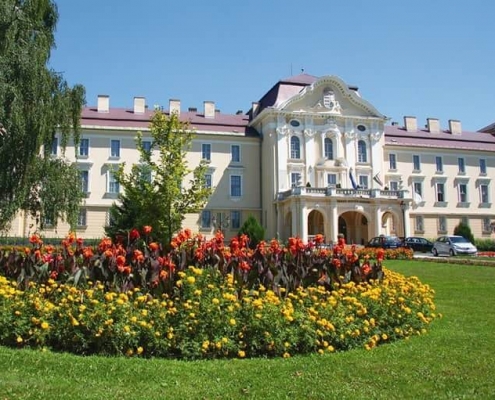
Proud of its green, panoramic areas, Gödöllő is a university town located very close to Budapest. The town’s most famous sight is the Grassalkovich Castle: the 18th-century building is one of the largest Baroque castles in Hungary. Later, it became the coronation present of Francis Joseph I and Empress Elisabeth of Austria. Gödöllő gained a lot of recognition and became an agrarian centre when in 1950 they relocated the Agrarian University there. The Hungarian University of Agriculture and Life Sciences (the former Szent István University) is currently operating not just in Gödöllő, but with one campus in the town of Budapest, Gyöngyös, Keszthely and Kaposvár. With nearly 13 000 students, the university has a wide range of possibilities to offer for international students.
Nyíregyháza
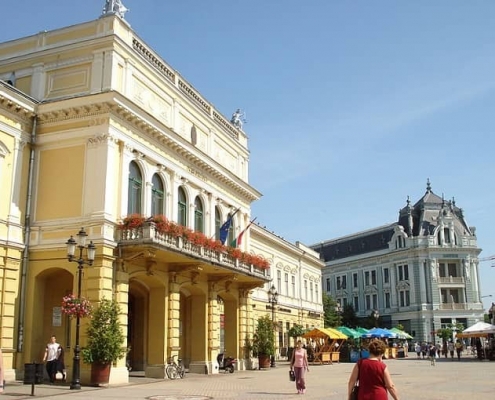
Located in the Eastern corner of Hungary, Nyíregyháza is the 7th biggest town in the country with a population of nearly 120 000 and a highly dynamic development. The town is located next to the holiday resort area of the lake Sóstó (“Salty Lake Bath”) with natural thermal water, an open-air museum, a spa, a great forest and one of the most famous zoos in Hungary known for keeping over 500 different species in a natural environment. The University of Nyíregyháza is one of the youngest universities in Hungary, offering a wide range of educational programmes focused on applied sciences like teacher training or engineering.


